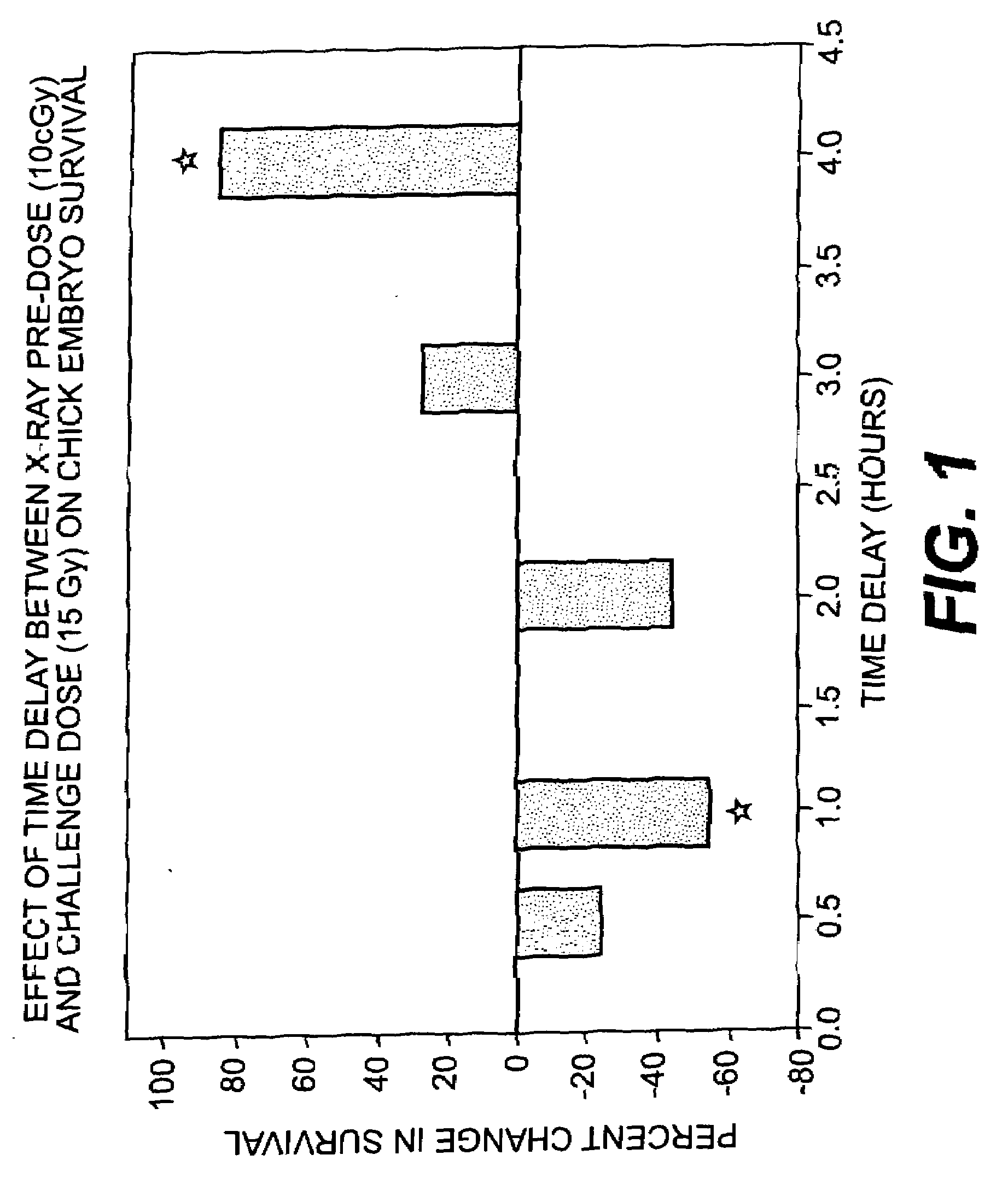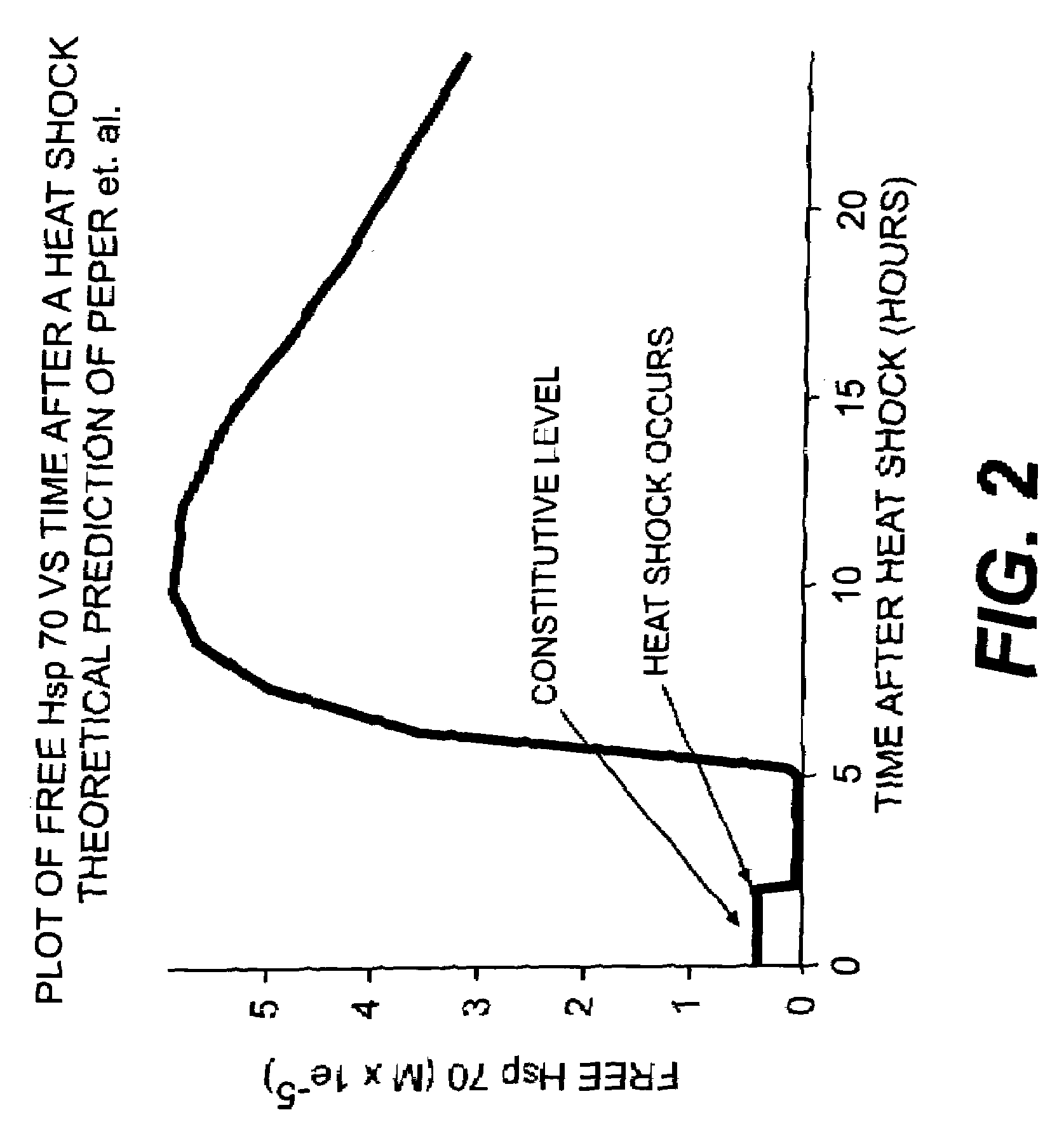Use of weak stressors to enhance the effectiveness of ionizing radiation and other treatments of disease
a technology of weak stressors and ionizing radiation, which is applied in the direction of snake antigen ingredients, antibody medical ingredients, therapy, etc., can solve the problems of preventing the ability to effectively treat target cells and the inability to estimate permanent damag
- Summary
- Abstract
- Description
- Claims
- Application Information
AI Technical Summary
Benefits of technology
Problems solved by technology
Method used
Image
Examples
example i
Enhancing the Killing Efficacy of Ionizing Radiation
[0055]When two identical areas of cells are selected for exposure to HDR, and when one of those two areas is exposed to LDR 3 or more hours prior to the HDR exposure, then it has been observed that the survival rate of that LDR exposed area is higher than the survival rate of the cells in the unexposed area. This indicates that cells exposure first to LDR before exposure to HDR will increase the survival rate of cells exposed to HDR, thus indicating that those cells would be harder to kill after such exposure to LDR. This is an expected result, as taught by prior art.
[0056]Unexpectedly, given the same two areas of cells described in the previous paragraph, in one embodiment of the present invention, when one area of cells is first exposed to LDR to form LDR-sensitized cells and then exposed to HDR within several minutes to 2.5 hours, the survival rate of cells in that LDR exposed area of cells is lower than the survival rate of the...
example ii
Enhancing the Killing Effect of Chemotherapeutic Agents
[0062]Focused LDR exposures may also be used in conjunction with chemotherapy where they have the advantage of being able to enhance the effect of the chemotherapeutic agent in a focused region of tissue, i.e. the tumor but not the normal tissue around it. In order to de-protect against stresses such as chemotherapeutic agents or any other lethal agent which act on the cells for hours instead of minutes, as is the case for ionizing radiation, the Hsp levels may be down-regulated for longer than 1 hour. To down-regulate the concentration of heat shock proteins for a period of more than 1 hour, LDR may be applied once a day for several days (preferably three to four days) prior to the use of chemotherapeutic agents. In this way the Hsp levels will remain down-regulated for many hours. This down regulation process may be explained as follows. When a stress is applied to a cell the level of Hsps is first decreased for about 2 hours ...
PUM
| Property | Measurement | Unit |
|---|---|---|
| time | aaaaa | aaaaa |
| heat shock | aaaaa | aaaaa |
| stress | aaaaa | aaaaa |
Abstract
Description
Claims
Application Information
 Login to View More
Login to View More - R&D
- Intellectual Property
- Life Sciences
- Materials
- Tech Scout
- Unparalleled Data Quality
- Higher Quality Content
- 60% Fewer Hallucinations
Browse by: Latest US Patents, China's latest patents, Technical Efficacy Thesaurus, Application Domain, Technology Topic, Popular Technical Reports.
© 2025 PatSnap. All rights reserved.Legal|Privacy policy|Modern Slavery Act Transparency Statement|Sitemap|About US| Contact US: help@patsnap.com


